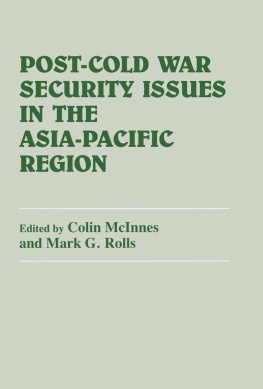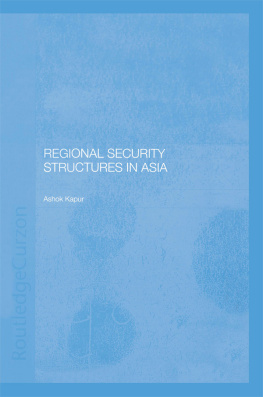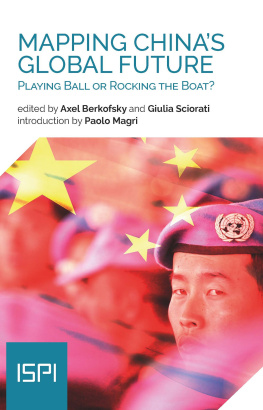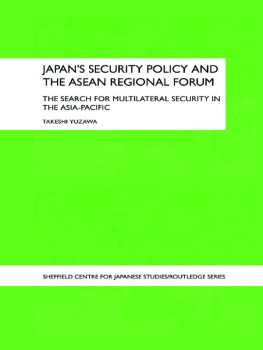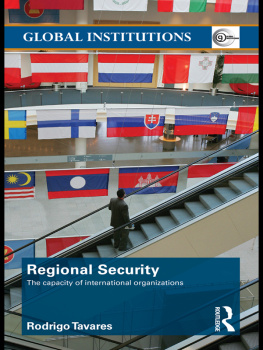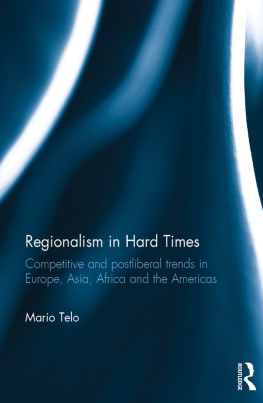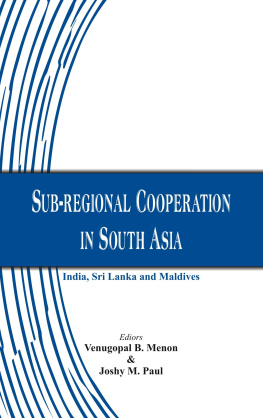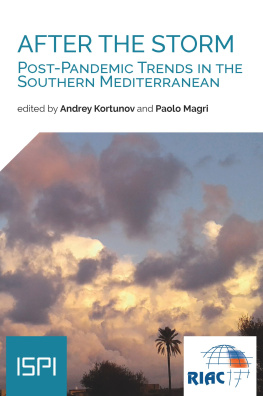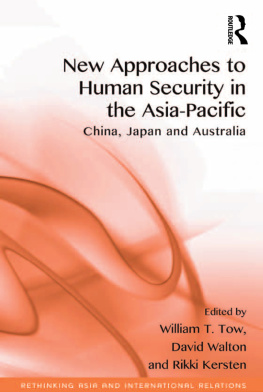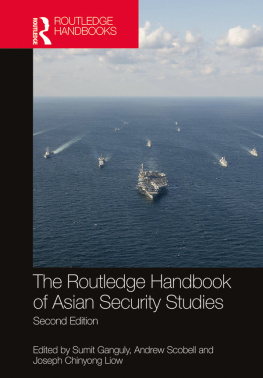2021 Ledizioni LediPublishing
Via Antonio Boselli, 10 20136 Milan Italy
www.ledizioni.it
Post-Pandemic Asia: A New Normal for Regional Security?
Edited by Axel Berkofsky and Giulia Sciorati
First edition: January 2021
The opinions expressed herein are strictly personal and do not necessarily reflect the position of ISPI.
The editors would like to thank the anonymous reviewer for the useful comments and suggestions.
Print ISBN 9788855264181
ePub ISBN 9788855264198
Pdf ISBN 9788855264204
DOI 10.14672/55264181
ISPI. Via Clerici, 5
20121, Milan
www.ispionline.it
Catalogue and reprints information: www.ledizioni.it
Introduction
In 2020, the way we define insecurity has drastically changed. No longer does it automatically bring to mind images of armed groups, or a fleet of missiles: insecurity can now also be invisible and all around us, in the shape of a virus that disrupts peoples lives, upends the economy, subverts the core functions of national governments, and jeopardises the foundations of international cooperation.
Still, the Sars-CoV-2 pandemic has not made traditional security challenges disappear. As it did with other aspects of our lives, with the help of national lockdowns and restrictions to international mobility, the virus merely pushed those challenges to the background. After the first wave of the pandemic subsided and restrictions eased, the terrorist attacks in France last November have served as a painful reminder to Europeans of potential short-term rebounds of violence.
In Asia, one of the worlds most insecure continents, the pause button had not even been fully pressed. In fact, in the spring of 2020, while the world was struggling to contain the death toll of Sars-CoV-2, China declared new administrative divisions in the South China Sea, stirring the waters of regional contestation. Put differently: Beijing has exploited the crisis caused by the global pandemic to unilaterally declare that disputed territories in the South China Sea are integral parts of Chinese national sovereign territory. Around the same time, despite the raging health and food crises, North Korea launched short-range cruise missiles off its eastern coast, redoubling concerns in Japan and South Korea. During the summer, terrorist attacks broke the truce negotiated by the pandemic in the Philippines, while China and the United States (U.S.) moved their respective naval vessels around the Taiwan Straits. In addition, the China-India border was tainted by the first serious violent clashes since the Line of Actual Control had been established in the 1910s. Lastly, in the fall, anti-government protests erupted in Thailand and Indonesia.
Therefore, despite the (one can only hope) uniqueness of 2020, traditional security challenges have remained pressing in the Asia Pacific and Indo-Pacific regions, adding a layer of complexity to states policy responses to the Sars-CoV-2 health and economic crises. As many have argued, the pandemic is acting as the great accelerator of our time. While the crisis has had some positive effects for instance, by accelerating green energy transitions it is also bound to continue amplifying longstanding and new security challenges, which will remain with us as the world continues to look for its new normal.
The above-mentioned events and developments span all major Asian hotspots, which are currently at risk of experiencing a post-crisis escalation first-hand. This is one of the reasons why this Report presents short- and long-term scenarios for each one of the hotspots that challenge peace and stability in the Asia-Pacific and Indo-Pacific regions. Both areas remain crucial for the global post-pandemic economic recovery, partly due to Chinas global role, and partly due to the recently signed Regional Comprehensive Economic Partnership agreement, which in the longer term is set to spur regional trade. Therefore, Asias security remains paramount to the international system, as the world cannot afford security crises that jeopardise economic recovery at this current fragile juncture.
The first chapter analyses the search for new security paradigms in the region. Niklas Swanstrm identifies China-U.S. competition as the crucial factor affecting Asias current security landscape. According to Swanstrm, the growing polarisation between authoritarian regimes and democracies during the pandemic has brought the China-U.S. rivalry even more to the fore. Coupled with a gradual linking of traditional and non-traditional security challenges, the competition is the element that is more likely to determine either a cooperating or conflicting period for Asia over the next few years.
The topic is further developed by Valrie Niquet in the second chapter. The author holds Chinas global engagement strategy accountable for aggravating Asias Thucydides trap, but also warns that the establishment of an alliance similar to the North Atlantic Treaty Organization (NATO) as a security provider is unfeasible, especially as Asia is still coming to terms with a U.S.-created power vacuum that no regional power has been able to fill. Although Japan is the best-suited candidate, it lacks the military capabilities and reach to become a credible power. Indeed, what at a first glance appears to be a textbook example of great power competition, Niquet argues, actually is a collection of regional survival strategies that were developed in an effort to react to Chinas hubris.
Moving on, Shino Watanabe presents an in-depth analysis of China and the U.S.s penetration within the continent. The author identifies a crucial strategic tool for Beijing in the massive presence of Chinese officials in the United Nations (UN), which has proved to be an asset for the countrys efforts to become a central protagonist in multilateral frameworks around the world and in the region. As Watanabe contends, there is still no real competition for China in Asia: the Quadrilateral Security Dialogue (Quad) bringing together the U.S., Japan, India, and Australia is in fact lacking full institutionalisation and cannot yet rival Chinas sophisticated cooperative frameworks like the Belt and Road Initiative (BRI). What would make a difference for Asia would be a U.S. re-engagement. However, even under the new Biden presidency, not only could the U.S. show that the country for now has other priorities (e.g., the national health and economic crises), but it might also be nearly impossible for Biden to match Chinas pace of regional expansion.
The remaining chapters maintain the China-U.S. confrontation in Asia as a premise, while looking at three security challenges in particular. Cristina Varriale begins by offerings insights into Asias nuclear threat, by examining the crucial case of North Korea. At the core of Varriales argument is the connection between the issue of proliferation and the military innovation of the countrys arsenal. To this day, China and the U.S. maintain contrasting approaches to North Korea: the former actually benefits from the countrys instability, while the latter prefers a diplomatic approach to Pyongyangs demilitarisation. As the author argues, Sars-CoV-2 has made access to North Korea even more difficult, thus further endangering the countrys diplomatic denuclearisation and, as sanctions cannot be lifted, anything resembling economic growth and recovery.



